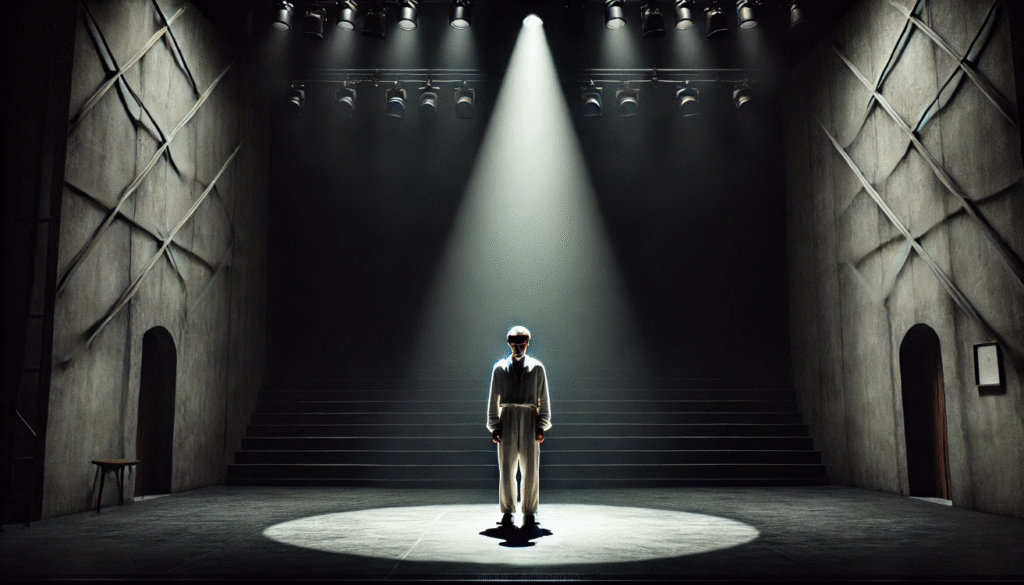Analysis of soliloquies in Hamlet is one of Shakespeare’s most renowned plays, and it is often considered one of his greatest works. The play follows the tragic story of Prince Analysis of soliloquies in “Hamlet” as he seeks revenge for his father’s death. It is renowned for its complex characters, psychological depth, and exploration of existential themes. Analysis of soliloquies in “Hamlet” play a significant role in Shakespearean drama, including in Hamlet. These monologues allow characters to express their inner thoughts and feelings to the audience, providing insight into their motivations and inner conflicts. Analysis of soliloquies in “Hamlet”, the soliloquies give the audience a deeper understanding of the protagonist’s emotional turmoil and internal struggle, adding to the complexity of the play.
The purpose of this article is to analyze the key soliloquies in Shakespeare’s Analysis of soliloquies in “Hamlet” in order to gain a deeper understanding of the protagonist’s state of mind and the thematic depth of the play. By closely examining the soliloquies, we can uncover Hamlet’s inner turmoil, his existential struggles, and his complex relationship with power, morality, and mortality. Through this analysis, we can gain insight into the complexities of Hamlet’s character and the broader themes that Analysis of soliloquies in “Hamlet” explores in the play.
Understanding Soliloquies in Shakespeare’s Works:
Soliloquies in Shakespeare’s plays are monologues in which a character speaks their thoughts aloud, often revealing their innermost feelings and conflicts to the audience. These moments provide a window into the character’s psyche, allowing the audience to gain insight into their motivations, fears, and desires. Soliloquies serve the purpose of allowing the audience to understand the complexity of the characters and their internal struggles, adding depth and dimension to the overall storytelling. They also provide a means for characters to express themselves in a way that may not be possible through dialogue with other characters, leading to a deeper understanding of the inner workings of the play’s protagonists.
Soliloquies in Hamlet serve as a powerful narrative tool that allows the audience to gain insight into the inner thoughts and emotions of the characters, particularly Hamlet himself. These moments of introspection and self-reflection provide a window into the character’s psyche, allowing the audience to understand their motivations and struggles on a deeper level. By directly addressing the audience, soliloquies also create a sense of intimacy and connection, drawing them further into the emotional journey of the characters. Additionally, soliloquies often reveal the character’s internal conflicts and moral dilemmas, adding complexity and depth to the overall narrative.
Hamlet’s Soliloquies – An Overview:

In William Shakespeare’s “Hamlet,” there are a total of seven soliloquies, with the most famous being “To be, or not to be” and “O, what a rogue and peasant slave am I!” These soliloquies are scattered throughout the play, with the first one occurring in Act 1, Scene 2 and the last one in Act 4, Scene 4. The soliloquies in “Hamlet” play a crucial role in revealing the psychological and emotional state of the protagonist, Hamlet. Through these monologues, the audience gains insight into Hamlet’s inner turmoil, his struggle with indecision, and his intense grief over his father’s death.
Detailed Analysis of Key Soliloquies:
“O, that this too too solid flesh would melt”

Hamlet’s grief and despair over his father’s death and his mother’s hasty remarriage are central themes in the play. His anguish is palpable as he grapples with the existential and philosophical questions that arise from these events. The play delves into the depths of human emotion and the complexities of life, death, and betrayal. Hamlet’s introspective nature leads him to question the meaning of life and the nature of existence, making the play a profound exploration of existential and philosophical undertones. The setting of the play, with its dark and brooding atmosphere, adds to the sense of despair and contemplation that permeates the story.
“What a piece of work is man”

Hamlet’s contemplation of human nature reflects a deep introspection into the complexities of human behavior and the inherent contradictions within individuals. His transition from admiration to disillusionment mirrors the struggle to reconcile idealized notions of humanity with the harsh realities of human imperfection and deceit. This exploration of human nature in Hamlet is rooted in Renaissance humanism, a cultural and intellectual movement that emphasized the potential for human achievement and the importance of individual autonomy. Through Hamlet’s journey, the play engages with the humanist ideals of self-discovery, skepticism, and the pursuit of truth, ultimately offering a nuanced portrayal of the human experience.
“To be, or not to be: that is the question”
The most famous soliloquy in Hamlet is the “To be, or not to be” speech, where Hamlet grapples with the existential questions of life and death. In this soliloquy, Hamlet contemplates the idea of suicide and the fear of the unknown that comes with death. He reflects on the pain and suffering of life, and the uncertainty of what lies beyond. This soliloquy is a deep philosophical exploration of mortality and the human condition, as Hamlet wrestles with his inner turmoil and the complexities of existence. It is a powerful and introspective moment in the play, revealing the depth of Hamlet’s internal struggle and his profound contemplation of life’s biggest questions.
“Oh, my offence is rank, it smells to heaven”
In Claudius’s soliloquies, we see a deep sense of guilt and fear of divine judgment. He grapples with the consequences of his actions, particularly the murder of his brother, King Hamlet. Claudius’s soliloquies are filled with internal conflict and a sense of remorse, as he struggles with the weight of his sins. In comparison to Hamlet’s soliloquies, Claudius’s focus on guilt and divine judgment is more direct and personal. While Hamlet also wrestles with moral dilemmas and existential questions, Claudius’s soliloquies are centered on his own culpability and the fear of divine retribution. This highlights the contrast between the two characters and their respective moral struggles.
“How all occasions do inform against me”
Hamlet’s self-reflection on his inaction is a central theme in the play. He often grapples with his inability to take decisive action, particularly in seeking revenge for his father’s murder. This inner turmoil is a significant aspect of his character development and contributes to the overall complexity of the play. When comparing Hamlet to Fortinbras, the theme of action versus inaction becomes even more pronounced. Fortinbras is depicted as a character who takes swift and decisive action to achieve his goals, contrasting with Hamlet’s tendency towards inaction. This serves to highlight the importance of action and the consequences of indecision in the play.
Themes and Motifs in Hamlet’s Soliloquies:
Exploration of recurring themes:
Death and mortality are inevitable aspects of the human experience. It is the cessation of life and the end of a person’s existence. It is a universal truth that everyone will eventually face. Madness, whether real or feigned, is a complex and often misunderstood phenomenon. It can be a result of mental illness or extreme emotional distress. Feigned madness, on the other hand, may be a calculated act to achieve a specific goal or to manipulate others. Revenge and justice are intertwined concepts that have been explored in literature and philosophy for centuries. Revenge is the desire to inflict harm on someone who has wronged you, while justice is the pursuit of fairness and moral rightness.
The themes of revenge, madness, and mortality play a crucial role in shaping Hamlet’s character and driving the narrative of the play. Hamlet’s obsession with seeking revenge for his father’s death consumes him and leads to his descent into madness. His struggles with mortality and existential questions further contribute to his internal conflict and turmoil. These themes drive the narrative by creating tension and driving the plot forward as Hamlet grapples with his inner demons and navigates the complexities of the world around him. Overall, these themes are integral to understanding Hamlet’s character and the development of the story.
The Role of Soliloquies in Character Development:
Soliloquies in Hamlet provide insight into the internal struggles of the character by allowing the audience to hear Hamlet’s inner thoughts and emotions. Through these soliloquies, we gain a deeper understanding of his conflicted feelings, doubts, and fears. They reveal his internal struggle with indecision, grief, and his sense of duty. These soliloquies help us to empathize with Hamlet and understand the complexity of his character as he grapples with his inner turmoil.
Hamlet’s soliloquies reveal his innermost thoughts and emotions as he grapples with grief, betrayal, and his own indecisiveness. Through his soliloquies, we witness the evolution of his character as he navigates his complex emotions and moral dilemmas. From his famous “To be, or not to be” soliloquy to his contemplation of death and the afterlife, Hamlet’s soliloquies offer a window into his inner turmoil and the internal conflict that drives the plot of the play. Soliloquies serve a vital dramatic function in engaging the audience by providing insight into a character’s inner thoughts and feelings.
Literary and Theatrical Impact of Hamlet’s Soliloquies:

Hamlet’s soliloquies have had a significant influence on literature and drama over the years. These introspective monologues give insight into the character’s inner thoughts and emotions, and have been lauded for their depth and complexity. They have also provided a model for future writers and playwrights to explore their characters’ internal struggles and dilemmas. In modern interpretations of Hamlet, the soliloquies continue to play a crucial role. They offer actors and directors a rich source of material to delve into the psychology of the character, and provide audiences with a deeper understanding of Hamlet’s inner turmoil. The soliloquies are often highlighted as key moments in productions, showcasing the timeless relevance and impact of Shakespeare’s writing.
The analysis of Hamlet’s soliloquies reveals key insights into his character and the depth of Shakespeare’s genius. These soliloquies serve as a window into Hamlet’s inner thoughts and emotions, showcasing his internal conflict, complexities, and the turmoil he experiences. They provide crucial context for understanding his actions and decisions throughout the play. The significance of soliloquies in understanding Hamlet’s character is immense, as they allow readers and audiences to empathize with his struggles and gain a deeper understanding of his motivations. Additionally, Shakespeare’s masterful use of language and poetic imagery in these soliloquies showcases his unparalleled talent as a playwright.













